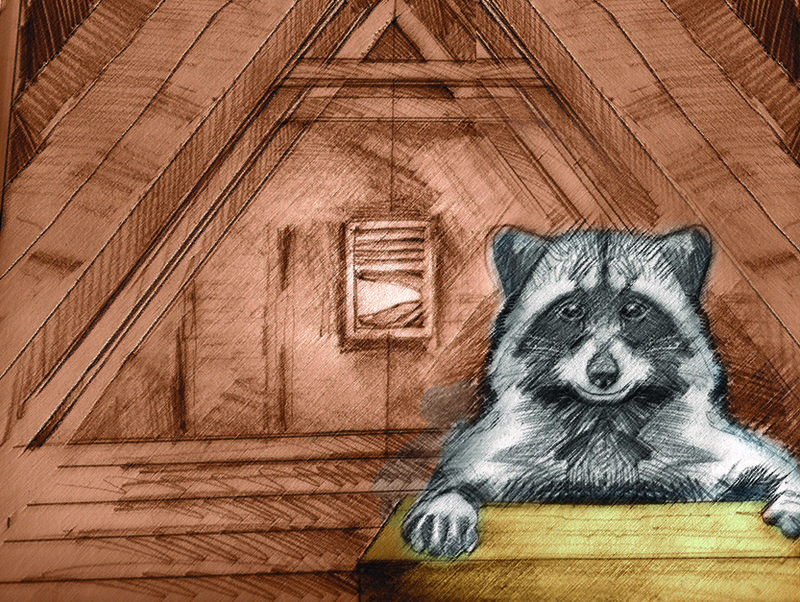I am a first-time homeowner and this will be my first fall and winter in the home I bought earlier this year. What should I do to try to prevent any wildlife from moving in when the temperatures start to drop and cooler weather arrives?
"The main key is making sure they don't have free access," says Gary McKim, president of D&G Varmint Control Inc. of Mabelvale. "If you've got screens missing in the vents going under your house, put a heavy screen or some other type of material in them that will keep unwanted creatures out.
"The same goes for the gables in the attic at the ends of your house," he says. "They [pests] are opportunists and if you give them the ability to walk right in, they will. Take away their easy opportunity to enter and that's going to be 85 percent of your ability to keep things out."
The most popular time for wildlife to start seeking a winter home is late September, McKim says.
"Field mice and rats are going to push real hard now to get into attics; so are squirrels and raccoon."
Having food sources outside the home can also attract wildlife. It's best not to leave dog food and cat food outside, he says. Bird feeders also attract unwanted pests.
"At least 60 percent of the people we do the squirrel control program for are feeding the birds," he says, adding that it's natural for the animals to choose to be as close to their food source as possible.
"My refrigerator is just a few short steps from the bedroom; I don't have it across town because I don't want to have to go that far to eat. If you supply them with [their version of] a refrigerator, they're going to move in."
When it comes to bats, McKim says, from his experiences, he believes the migrating patterns of many of them have shifted.
"The bat situation in Arkansas has changed over the last decade," he says. "It used to be that we might have had a lot of the bats migrating out of here when it started getting cold and then they'd come back in the spring," he says. "But now I think most of our bats stay here all winter long; I think the majority of them
just don't migrate out."
Here are some additional tips to keep the pests at bay:
• Secure bird feeders on poles that prevent climbing and place them away from roofs
• Regularly check crawl space vents for signs of the presence of wildlife
• Bury compost and cover with a screen
• Place protective netting over any fruit-bearing plants such as tomatoes
• Inspect crawl spaces, gutters, roof and garage for entrance areas, especially in places such as where a porch connects with gutters, soffits or eaves.
• Cut back any trees, bushes or other plants that form a connection to the roof.
As for entering homes, McKim says there are certain animals, like squirrels, flying squirrels and even mice and rats, that can make their own entrances by chewing.
"There's not a whole lot you can do about those who can make their own entry," he says.
At that point, removing the animals becomes more difficult. He recommends that people who want to remove unwanted animals themselves use traps and one-way exclusion devices.
Do you have a decorating or remodeling question? We'll get you an answer from an authority. Send your question to Linda S. Haymes, Arkansas Democrat-Gazette, P.O. Box 2221, Little Rock, Ark., 72203 or email:
lhaymes@arkansasonline.com
HomeStyle on 09/24/2016
